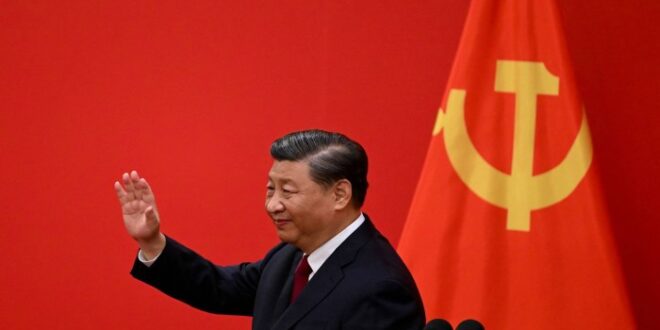Shehab Al Makahleh
The Arab countries and the People’s Republic of China have historically friendly and harmonious relations, and this distinguished relationship continues to this day, as these bilateral relations between the two countries are based on the principles of respect and non-interference in internal affairs or foreign policies. The two sides have strengthened dialogue, exchanges and mutual learning, and have always respected each other’s social system and development path regardless of differences in ideology.
Sino-Arab relations have achieved great development at various levels, especially on the economic level, and the total volume of trade exchange between China and Arab countries has reached $266 billion by end of 2021. In addition, China has firmly ranked first as the largest trading partner of the Arab countries, and this is a clear indication of the development of Arab-Chinese relations
The policy of going east by many Arab countries, specifically the Arab Gulf states, is no longer just a slogan. It has become a reflection of a set of geostrategic and geo-economic transformations that the Middle East and China are going through, amid joint interaction from Middle Eastern states that have begun to move eastward, to enhance their cooperation with Asian powers.
There is a general trend on the part of the Asian powers, indicating that they seek more than protecting their interests in the Middle East region, which are concentrated in providing energy, securing its supplies and obtaining mutual investment opportunities.
According to Saudi and Chinese sources, three Chinese summits will soon be held in Saudi Arabia, the first with the host country, the second in the Gulf and the third at the Arab level.
These summits are scheduled to precede an upcoming visit by Chinese President Xi Jinping to Riyadh, the first since 2016.
In 2016, Chinese President Xi Jinping visited Riyadh, then Saudi King Salman Bin Abdul Aziz paid a visit in 2017 to China, accompanied by a delegation of a thousand people. In 2019, Saudi Crown Prince Mohammed Bin Salman held talks with Xi in Beijing, during which they concluded an oil deal worth $10 billion.
A dispute has erupted between Washington and Riyadh since OPEC+ took a decision in October to cut production, although US President Joe Biden’s administration sought to have the bloc postpone this decision for a month after the midterm elections in the United States.
With US-Saudi relations at a low point, Prince Mohammed Bin Salman has resorted to strengthening relations with Russia and China, although the kingdom still enjoys close security relations with Washington. China depends on the volatile Middle East for its oil needs, and it is the second largest economy in the world after the United States.
The comparison of the volume of Arab-Chinese trade exchange indicates two important phenomena: The volume of joint trade, according to data from the Chinese Ministry of Commerce, amounted to $266.4 billion, which means an annual increase of about $15 billion by 2021. Chinese imports from Arab countries amounted to $146 billion in 2019, an increase of 4.8 per cent year on year, and in the same period. Chinese exports to Arab countries reached $120.4 billion, up 14.7 per cent year on year.
Chinese data showed that direct Chinese investments in all Arab countries amounted to $42 billion in 2019, an increase of 18.8 per cent over the previous year. The value of contracted project contracts signed by Chinese companies with Arab countries amounted to $32.5 billion in 2018, down 8.7 per cent year on year, while the business value of Chinese companies reached $30.5 billion US dollars, up 9.8 per cent year on year. Chinese official figures indicate that the total volume of China’s investments in the Arab region rose from $36.7 billion in 2004 to $224.3 billion in 2018.
In 2018, China provided an aid package to Arab countries amounting to about $23 billion. About 87 per cent of Chinese aid was in the form of loans allocated to developing projects and creating job opportunities, and $6 million of this aid was in the form of humanitarian and construction aid for Syria, Yemen, Jordan and Lebanon. Egypt was also loaned an amount of $1.2 billion to construct an electric train with a length of 68 kilometres.
Saudi Arabia also signed 12 joint trade agreements with China, worth $28 billion in February 2019 to establish a complex for oil refining and petrochemical industries in China. The United Arab Emirates also signed 16 agreements with China in the fields of economy, oil and environment. These agreements included assigning the development of a residential and recreational area in the vicinity of Beijing International Airport to the Emirati company, Emaar through an Emirati investment of $11 billion.
Arab oil is of great importance to China. The volume of Arab oil exports to China in 2018 amounted to about $7 billion. Three Arab countries are among the first five countries that cover the main part of the Chinese need for energy in the same year. These three countries are: Saudi Arabia in second place, with a value of 29.7 billion, Iraq in fourth place, with a value of $22.4 billion, and the Sultanate of Oman in fifth place, with a value of $17.3 billion.
Data issued by the China-Arab States Cooperation Forum for Tourism in 2019 showed that the number of mutual visitors between China and Arab countries increased by an average of 5 per cent annually during the period from 2014-2019 thanks to the Belt and Road Initiative. The number of Arab visitors to China in 2018 amounted to a total of 345,000 Arabs, while about 1.6 million Chinese visitors went to Arab countries for tourism as a first stop, with an increase of 0.7 per cent and 9 per cent for the years 2018-2019. The number of flights between Arab countries and China reached an average of 28 flights per day.
 Geostrategic Media Political Commentary, Analysis, Security, Defense
Geostrategic Media Political Commentary, Analysis, Security, Defense





